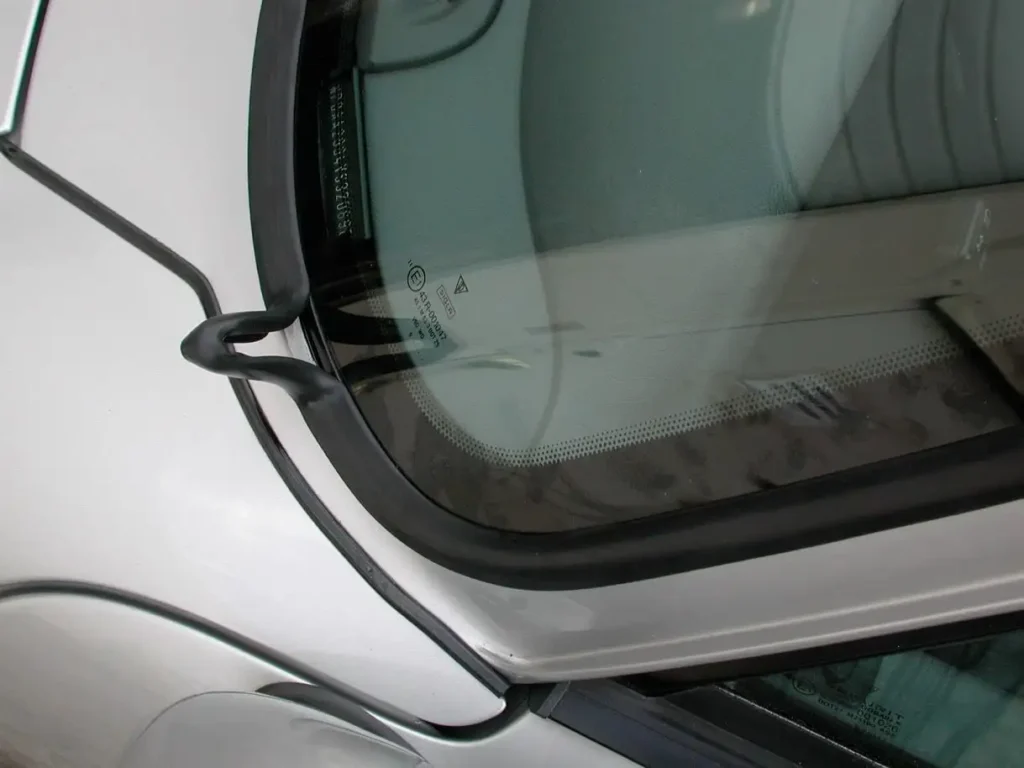How to Fix a Leaking Windshield Like a Pro
How to fix a leaking windshield is a crucial concern for vehicle owners, as addressing this issue promptly can prevent significant damage and inconvenience. When water leaks into the interior of a car through the windshield, it can lead to various problems such as mold growth, electrical malfunctions, and interior damage to upholstery and carpeting. Therefore, timely resolution of a leaking windshield is essential to maintain the integrity and functionality of the vehicle.
What Causes Water To Leak Inside A Car
Identifying potential sources of water leakage inside a car:
Cracked or damaged windshield seals: Over time, the seals around the windshield can degrade or develop cracks due to exposure to sunlight, temperature fluctuations, and general wear and tear. These compromised seals allow water to seep into the interior of the vehicle during rain or when the car is washed.
Improper installation of the windshield: If the windshield is not correctly installed or if there are gaps between the glass and the vehicle’s frame, water can infiltrate the interior during inclement weather or car washing. Poor installation may result from inexperienced technicians or using low-quality materials.
Clogged drainage channels: Many vehicles have drainage channels along the edges of the windshield designed to divert water away from the interior. If these channels become clogged with debris such as leaves, dirt, or twigs, water can accumulate and overflow into the cabin, causing leakage issues.
Damage to the vehicle’s body or frame: Structural damage to the vehicle’s body or frame, particularly around the windshield area, can compromise the integrity of the seal and allow water to penetrate the interior. This damage may result from accidents, rust, or corrosion over time.
Exploring the impact of each cause on water leakage:
- Cracked or damaged windshield seals can lead to persistent water leakage, which can cause damage to the interior components of the car, including the upholstery, carpeting, and electrical systems.
- Improper installation of the windshield can result in recurring leakage issues, requiring corrective measures to seal the gaps and prevent further water infiltration.
- Clogged drainage channels can cause water to accumulate around the windshield, leading to leaks that may result in mold growth, musty odors, and potential damage to electronic components.
- Damage to the vehicle’s body or frame can compromise the structural integrity of the windshield seal, leading to chronic water leakage problems if not addressed promptly.
Addressing misconceptions about water leakage inside a car:
- One common misconception is that water leakage inside a car is solely caused by a damaged windshield. While this can be a contributing factor, other issues such as improper installation and clogged drainage channels can also lead to water infiltration.
- Another misconception is that water leakage is merely a minor inconvenience. In reality, prolonged exposure to moisture can lead to significant damage to the vehicle’s interior and electrical systems, posing safety hazards and reducing the car’s resale value. Therefore, addressing water leakage promptly is essential for maintaining the vehicle’s integrity and functionality.
Tips For How To Fix A Leaking Windshield

DIY Repair Methods for Fixing a Leaking Windshield:
Applying windshield sealant or adhesive: Use a high-quality windshield sealant or adhesive to fill in any cracks or gaps around the windshield seals. Apply the sealant generously along the edges of the windshield, ensuring complete coverage to create a watertight seal.
Replacing damaged weather stripping: Inspect the weather stripping around the windshield for any signs of damage or wear. If you notice any cracks, tears, or deterioration, carefully remove the old weather stripping and replace it with a new one. Ensure that the new weather stripping is securely in place to prevent water leakage.
Clearing clogged drainage channels: Locate the drainage channels along the edges of the windshield and use a small brush or compressed air to remove any debris or blockages. Ensure that the channels are completely clear to allow proper drainage of water away from the windshield and prevent overflow into the car’s interior.
Step-by-step instructions for each repair method:
Applying windshield sealant or adhesive:
- Clean the area around the windshield seals thoroughly to remove any dirt, debris, or old sealant.
- Apply the windshield sealant or adhesive according to the manufacturer’s instructions, using a caulking gun or applicator.
- Smooth out the sealant with a putty knife or gloved finger to ensure even coverage and a tight seal.
- Allow the sealant to cure completely before exposing the windshield to moisture or driving the vehicle.
Replacing damaged weather stripping:
- Carefully remove the old weather stripping from around the windshield using a trim removal tool or utility knife.
- Clean the area where the old weather stripping was removed to ensure proper adhesion for the new stripping.
- Install the new weather stripping by pressing it firmly into place along the edges of the windshield.
- Ensure that the weather stripping is properly seated and secured to prevent water from seeping through gaps.
Clearing clogged drainage channels:
- Locate the drainage channels along the edges of the windshield, usually found near the windshield wipers or at the bottom corners.
- Use a small brush, compressed air, or a flexible wire to gently remove any debris or blockages from the channels.
- Flush the channels with water to ensure that they are completely clear and allow proper drainage away from the windshield.
Safety precautions to consider during the repair process:
- Wear appropriate protective gear, such as gloves and safety glasses, to prevent injury from sharp tools or chemicals.
- Work in a well-ventilated area to avoid inhaling fumes from sealants or adhesives.
- Follow the manufacturer’s instructions and recommended safety precautions when using any repair products or tools.
- Take your time and work carefully to avoid causing further damage to the windshield or surrounding areas.
- If you are unsure about performing the repairs yourself, consider seeking professional assistance from a qualified auto glass technician. If you want professional guidance then Reliable Auto Glass is best in business.
Does a Leaking Windshield Need to Be Replaced?
When dealing with a leaking windshield, several factors influence the decision to repair or replace it:
Extent of Damage: Assess how severe the leakage is and whether it’s due to a minor crack or a larger structural issue. Small leaks might be repairable, while extensive damage may require replacement.
Cost-effectiveness of Repairs Versus Replacement: Consider the cost of repairing the leak compared to the cost of replacing the entire windshield. Sometimes, repairing a small leak is more cost-effective than replacing the entire windshield.
Safety Considerations: A leaking windshield can compromise the structural integrity of the vehicle, especially in the case of extensive damage or if water is entering the vehicle cabin. Safety should be a priority when making the decision.
Consulting with a professional is crucial for expert advice:
Consulting with a Professional: Seek guidance from a qualified auto glass technician or a mechanic who specializes in windshield repairs and replacements. They can assess the extent of the damage and provide recommendations based on safety and cost-effectiveness.
If replacement is necessary, exploring alternative solutions can be beneficial:
Exploring Alternative Solutions: In some cases, there may be alternative solutions such as aftermarket windshields or reconditioned parts that can be more cost-effective than brand-new replacements. Discussing options with the professional can help in making an informed decision.
Ultimately, the decision to repair or replace a leaking windshield depends on various factors, and seeking expert advice is advisable to ensure safety and cost-effectiveness.
Conclusion
Addressing a leaking windshield promptly is of paramount importance for several reasons. Firstly, a leaking windshield can compromise the structural integrity of the vehicle, leading to potential safety hazards for both the driver and passengers. Water ingress can weaken the framework of the car, increasing the risk of accidents, particularly in the event of sudden impacts or collisions. Moreover, prolonged exposure to moisture can facilitate the development of rust and corrosion, further weakening the vehicle’s framework and potentially causing irreparable damage. Feel free to contact us for any type of services or query like how to fix a leaking windshield.
FAQs
What Are The Common Causes Of A Leaking Windshield?Leaking windshields can be caused by various factors including damaged seals, improperly installed windshield, rust around the frame, or cracks in the glass itself.
How Can I Identify If My Windshield Is Leaking?
Look for signs such as water pooling on the dashboard or floor mats, musty smell inside the car, or visible water stains around the edges of the windshield.
Can I Fix A Leaking Windshield Myself?
It is possible to fix a leaking windshield yourself if you have the necessary skills and tools. However, it’s recommended to seek professional assistance for a more effective and long-lasting solution.
What Tools And Materials Do I Need To Fix A Leaking Windshield?Depending on the cause of the leak, you may need items such as a sealant, caulking gun, razor blade, glass cleaner, and a suction cup windshield repair kit.
How Do I Repair A Leaking Windshield Caused By A Damaged Seal?
Clean the area around the seal, remove any old sealant, apply a new layer of sealant evenly, and press the seal firmly into place. Allow it to dry completely before exposing it to moisture.
Is It Possible To Fix A Leaking Windshield Without Replacing It?
Yes, in many cases, a leaking windshield can be repaired without the need for a full replacement. However, this depends on the extent of the damage and the effectiveness of the repair method used.

